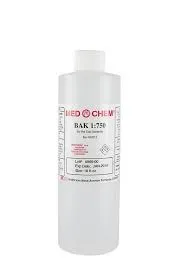Properties and Applications of Hydrolyzed Polymaleic Anhydride in Various Industries
Hydrolyzed Polymaleic Anhydride Properties and Applications
Hydrolyzed polymaleic anhydride (HPMA) is a derivative of polymaleic anhydride, which is a type of polymer formed from the polymerization of maleic anhydride. This compound has garnered attention in various industrial applications due to its unique chemical properties, particularly after hydrolysis. The hydrolysis process converts anhydride groups into carboxylic acid groups, leading to modifications in the polymer’s characteristics such as solubility, reactivity, and functionality. This article explores the properties of hydrolyzed polymaleic anhydride, its synthesis, and its wide-ranging applications.
Synthesis and Properties
The synthesis of hydrolyzed polymaleic anhydride typically involves the polymerization of maleic anhydride followed by hydrolysis. The resulting polymer contains both hydrophilic and hydrophobic regions, which contribute to its amphiphilic nature. This property enhances its solubility in various solvents, making it suitable for a range of applications in different environments.
The hydrolysis of polymaleic anhydride yields a product that is water-soluble, making it particularly valuable in aqueous environments. The carboxyl groups introduced through hydrolysis make the polymer more reactive and enable it to form complexes with metal ions, which is beneficial for applications such as water treatment and chemical formulation.
Applications
1. Water Treatment One of the most significant applications of hydrolyzed polymaleic anhydride is in water treatment processes. Its ability to chelate metal ions helps in preventing scale formation in water systems. This property makes HPMA an effective dispersant and scale inhibitor in cooling water systems, boilers, and reverse osmosis membranes. By controlling scale deposition, HPMA helps in maintaining the efficiency of water systems and extends the lifespan of equipment.
hydrolyzed polymaleic anhydride

2. Oil and Gas Industry In the oil and gas sector, HPMA is employed as a stabilizing agent in drilling fluids. Its exceptional dispersant properties aid in maintaining the stability and consistency of the drilling mud, which is essential for efficient drilling operations. Additionally, HPMA can help in preventing the aggregation of particulates, which can hinder drilling progress and increase costs.
3. Personal Care Products Due to its amphiphilic nature and compatibility with skin, HPMA is gaining traction in the cosmetic and personal care industry. It is used in various formulations, contributing to the stability and effectiveness of products such as lotions, creams, and shampoos. HPMA can improve the texture and skin feel of these products while enhancing their moisturizing properties.
4. Agriculture Hydrolyzed polymaleic anhydride can also be utilized in agriculture as a soil conditioner. Its ability to enhance water retention in soils contributes to improved plant growth and development. By forming complexes with soil nutrients, HPMA helps in the controlled release of these nutrients, promoting better nutrient uptake by plants.
5. Construction The construction industry benefits from HPMA as well, particularly in cement and concrete formulations. It acts as a superplasticizer, improving the workability and performance of concrete while reducing the water-to-cement ratio. This leads to stronger, more durable concrete structures, which are crucial in modern construction practices.
Conclusion
Hydrolyzed polymaleic anhydride stands out as a versatile polymer with a broad range of applications across various industries. Its synthesis through the polymerization of maleic anhydride and subsequent hydrolysis results in a product that not only boasts enhanced solubility and reactivity but also brings significant benefits to applications in water treatment, oil and gas, personal care, agriculture, and construction. As industries continue to seek efficient and sustainable solutions to their challenges, HPMA will likely play an increasingly important role in innovative formulations and processes, making it a key player in the development of advanced materials and technologies.
-
Water Treatment with Flocculant Water TreatmentNewsJun.12,2025
-
Polymaleic AnhydrideNewsJun.12,2025
-
Polyaspartic AcidNewsJun.12,2025
-
Enhance Industrial Processes with IsothiazolinonesNewsJun.12,2025
-
Enhance Industrial Processes with PBTCA SolutionsNewsJun.12,2025
-
Dodecyldimethylbenzylammonium Chloride SolutionsNewsJun.12,2025





